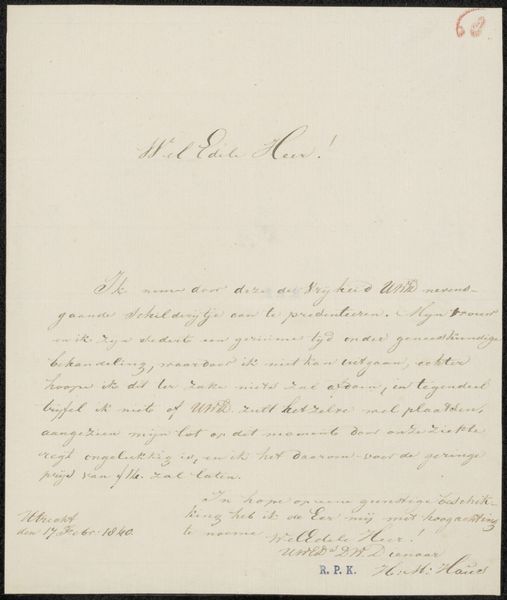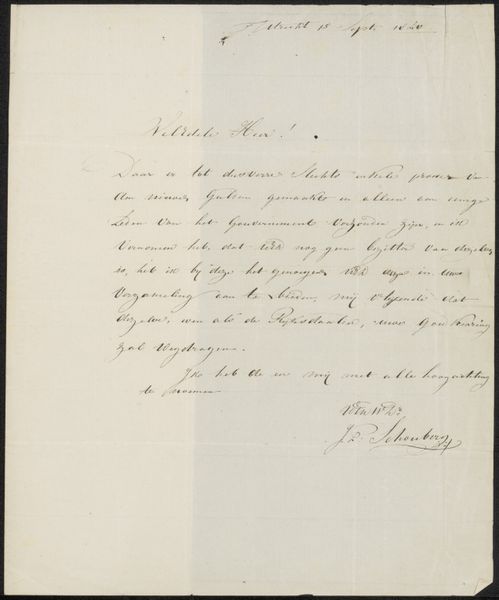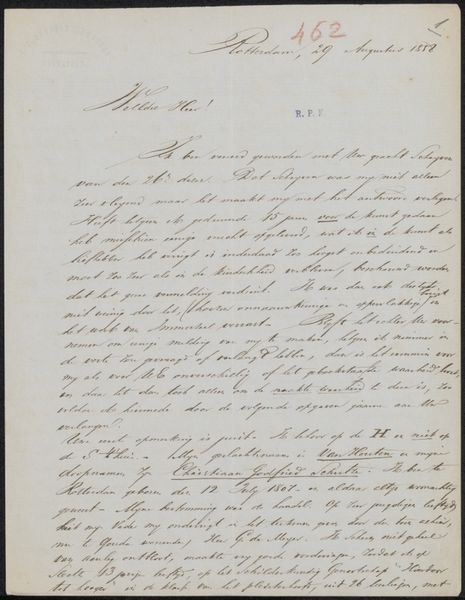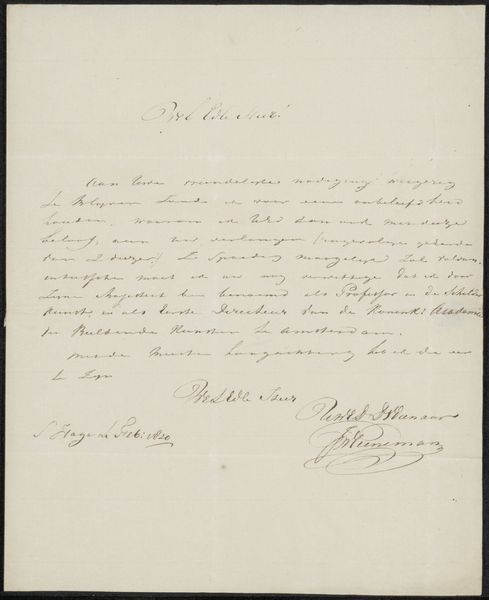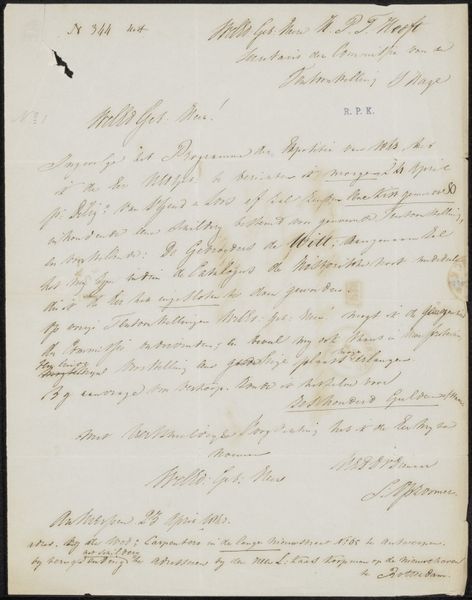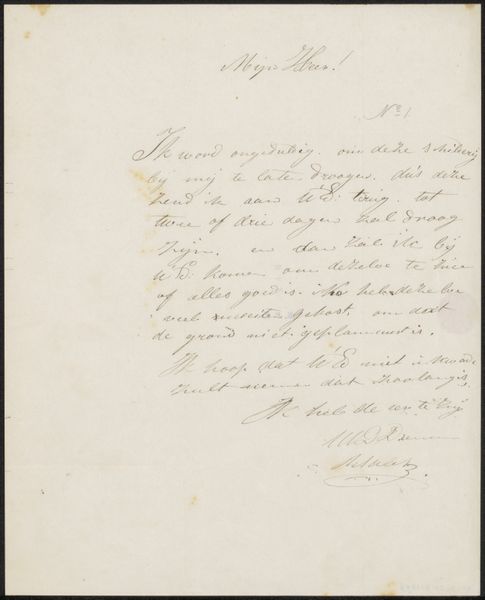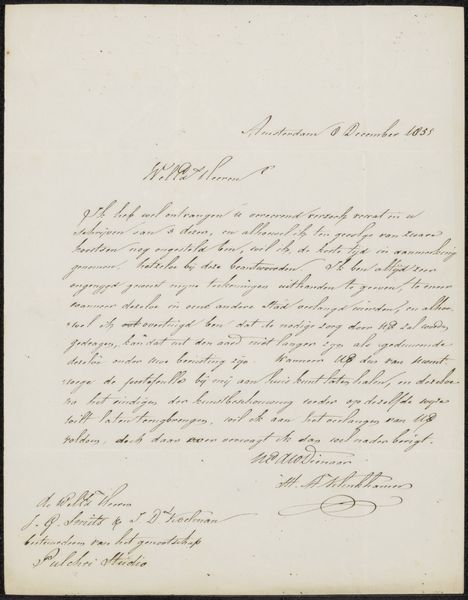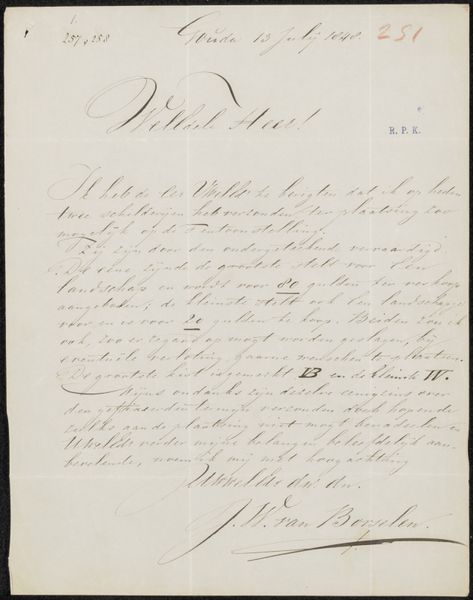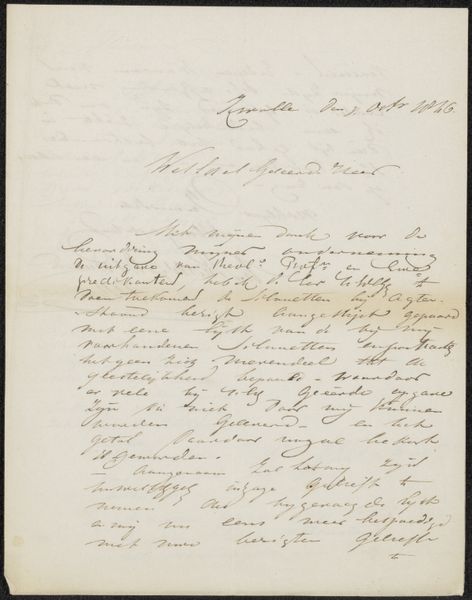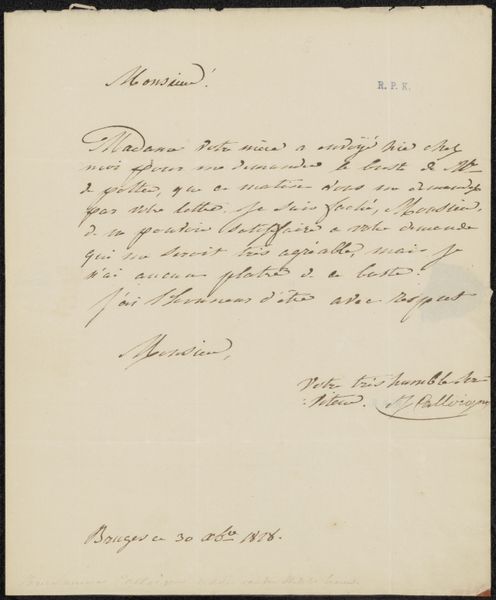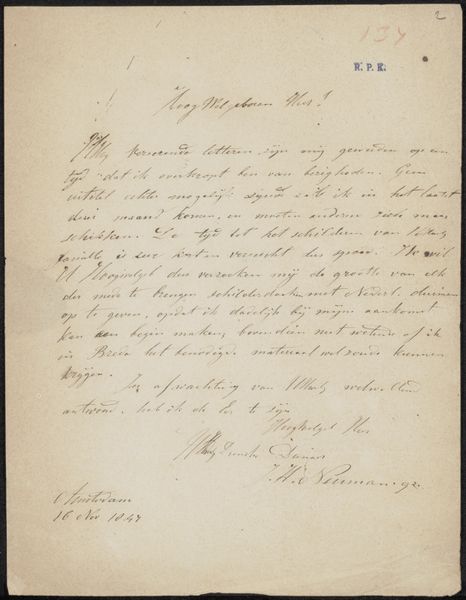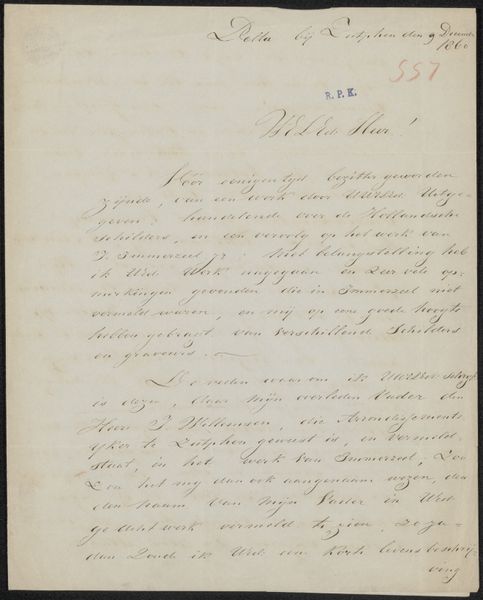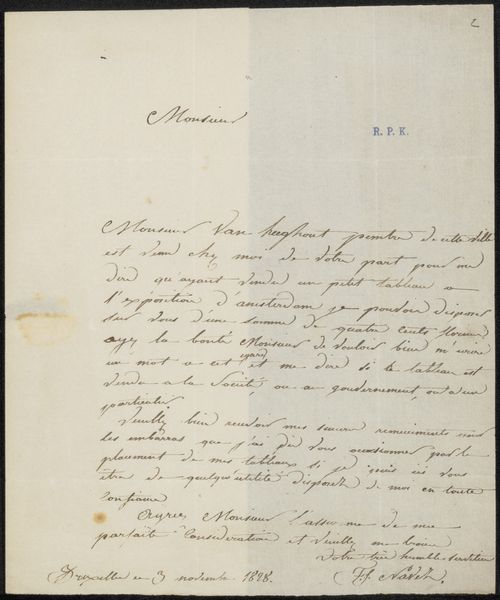
drawing, paper, ink
#
portrait
#
drawing
#
paper
#
ink
#
romanticism
#
calligraphy
Copyright: Rijks Museum: Open Domain
Curator: Welcome. Here we have a delicate ink drawing on paper from the Rijksmuseum, tentatively dated 1833, attributed to Petrus Johannes Schotel, titled "Brief aan anoniem," or "Letter to Anonymous." Editor: My first impression is one of quiet intimacy. The letter is undramatic, almost faded. Its subtle shades and thin lines evoke a bygone era of personal communication. There’s an aura of secrecy surrounding it. Curator: Indeed, the letter format is telling. Its romantic, flowing script immediately evokes the era's emphasis on aesthetics, emotion, and even performance in correspondence. Writing letters wasn't just functional; it was an art. Consider, too, the careful flourishes and the paper itself. Editor: Yes, look at the overall composition—the meticulous margins and even spacing. There is almost an obsession with order despite the casual nature of its intent. The way the ink interacts with the textured paper provides visual contrast, making each character appear almost sculptural. Curator: And that is significant, since written correspondence like this carries layers of symbolic weight. Anonymity shrouds it with mystery. To whom was Schotel writing, and about what? The unreadable tells its own story, reflecting the potential power—or vulnerability—inherent in written communication. The careful penmanship versus the ambiguous content hints at a struggle between disclosure and concealment. Editor: It's precisely that tension, visually represented, that fascinates me. The artwork resides in its form. We see this emphasis on craftsmanship reflected elsewhere, notably in its elegant lines and tonal control across what amounts to the simple act of handwritten communication. Curator: The absence of a specific recipient speaks volumes, shifting the focus to the very act of communication itself. Anonymous addressees throughout history gain an archetypal, almost universal, quality. Perhaps that heightens the romantic overtones? Editor: Undoubtedly, it's what turns this note into art. Schotel elevates something mundane into a powerful reflection upon sentimentality, the private self, and all of the uncertainties contained in a handwritten message. Curator: It reminds us that even the simplest form, like a letter, can hold tremendous psychological and cultural weight, embodying the spirit of an entire era. Editor: An eloquent testament, carefully drafted and subtly composed, to the enduring power of simple human exchange.
Comments
No comments
Be the first to comment and join the conversation on the ultimate creative platform.
